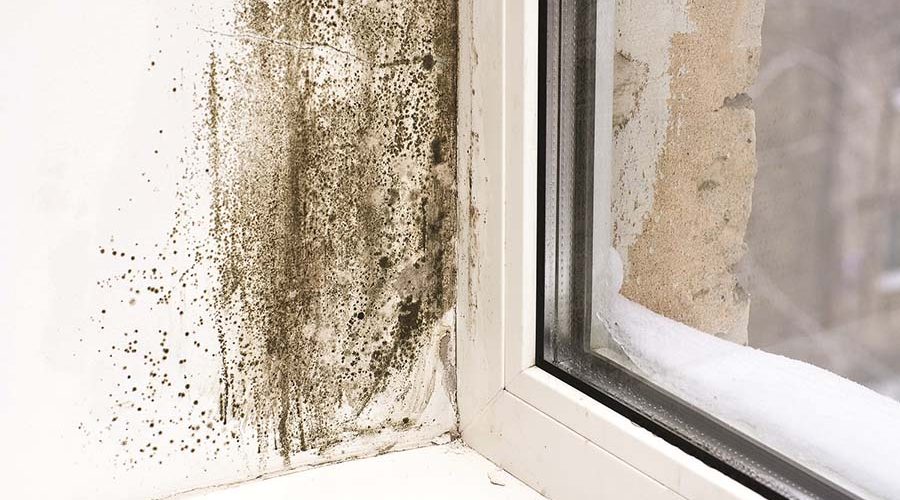Condensation is an issue that rears its head every year, especially in private rented and social housing. There are a number of factors that regularly contribute to its prevalence, but events of the past six months have created a perfect storm that could make this year’s condensation season worse than ever. John Bradley, Managing Director at Homevent (Elta Fans residential division), explains.
Elta Fans
For anyone involved with housing management and maintenance – particularly landlords – condensation is a massive issue. Typically occurring during the colder months of the year, it is caused by moisture-laden air inside a home cooling as it comes into contact with colder walls and windows. Crucially, it is intrinsically linked to a lack of ‘adequate ventilation’.
What are the issues with inadequate ventilation?
Inadequate ventilation has a big impact on the quality of air inside a home, and can be linked with a number of health concerns such as sinus problems, skin rashes, exacerbation of asthma and even bronchitis. For occupants, this is clearly unacceptable, and measures should be taken to ensure there is enough ventilation for the sake of their health.
The Homes (Fitness for Human Habitation) Act 2018 provides a means for tenants to make claims against their landlord if they feel that instances of condensation, mould and damp are a direct consequence of inadequate ventilation. Or, as it is referred to in the Government’s guidance on the act, “not enough ventilation”. Alongside the structural damage it can cause, this risk of compliance highlights why a ‘prevention is better than cure’ approach should be taken to combatting condensation.
Tenant behaviour
One of the most challenging aspects of addressing condensation in rented housing is the lack of control a landlord has over tenant behaviour and their use of purpose-provided ventilation measures installed in a home. This is understandable in many cases, especially in homes where background ventilators such as trickle vents in windows are installed.
It can be challenging to explain to a tenant that they should leave trickle ventilators open during cold weather months, given that these vents are installed in double and sometimes triple glazed windows, designed to keep heat in during winter. This perceived contradiction and lack of understanding of the use of trickle ventilators is often at the heart of many condensation dampness problems in homes.
This is an issue compounded when tenants are on low incomes, as they will often be unable to afford high heating bills. In turn, this also makes them less likely to open windows, which might otherwise help to naturally ventilate a room and allow moisture to escape. Particularly prevalent in social housing, the link between fuel poverty and condensation is something that landlords should be aware of, in order to facilitate a proactive approach to mitigating a lack of natural ventilation.
Higher levels of home occupancy
One of the lasting effects of the COVID-19 lockdown has been the amount of time individuals are spending at home. We often hear that we spend 90% of our lives indoors, and when you consider that social distancing has meant the closure of numerous leisure and work spaces, it is clear that many of us are spending more time than ever in our homes.
This is coupled with an increase in remote working, with 74% of those asked in a recent survey saying they would prefer to continue working remotely in the future. If more people are spending more time at home, it means more moisture will be produced in rented properties, and therefore more instances of condensation will occur. If landlords are to avoid the negative consequences of this, both financial and health-related, they have to consider whether a more strategic approach to ventilation is required.
Green Homes Grant
The circumstances that we have described already present a worrying picture for the condensation season ahead, and the introduction of the Green Homes Grant further exacerbates the issue. Under the grant, families can receive vouchers of up to £5000 for energy-saving changes to their home, which crucially includes insulation.
This is a move which is absolutely welcomed from a heat-loss and carbon emissions perspective, however, without incorporating improvements to ventilation, this has the potential to worsen an already worrying trend towards homes that are too ‘airtight’, or not fitted with adequate purpose-provided ventilation measures. It’s something we have seen over the past few decades, as structures increasingly reduce the amount of air that naturally flow in and out. The problem with this is that moisture produced inside the home cannot escape, and if this is combined with the factors we have already outlined, it could have major repercussions for landlords tasked with preventing condensation.
Finding a solution
While much of what we have covered is out of a landlord’s direct control, it is worth understanding the options that are available to them in limiting the prevalence of condensation. It is a critical balancing act when it comes to rented housing, and social housing in particular, to ensure good indoor air quality without incurring high energy bills.
The provision of properly applied, installed and commissioned good quality condensation control equipment, designed to work with little or no dependency on trickle ventilators, can ensure that good indoor air quality is maintained in a cost-effective, energy-efficient way, but it is vital that a case-by-case approach is taken to find the best solution. On the eve of what could turn out to be the worst condensation season in memory, landlords should be doing all they can to mitigate the unfortunate set of circumstances we have covered.
In a bid to help social housing landlords meet their obligations to tenants in an efficient and compliant way, Homevent is offering a free one-hour CPD seminar on ‘Providing “adequate ventilation” in existing homes’. The range of considerations and potential solutions can be intimidating, which is why landlords should engage with ventilation specialists ahead of the cold winter months.









